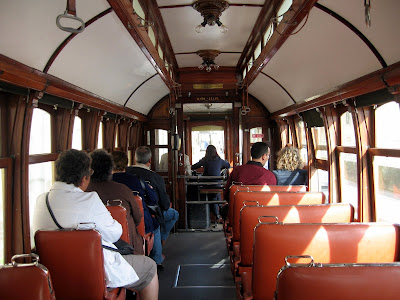2. The line must have continued beyond Vila Real in the past.
3. Curtains drawn against the October sun.
4. The depot just outside Regua. The broad gauge tracks can be seen on the right and also a semaphore signal on the left.
5. Mixed gauge track. All trains in both directions cross this bridge.













































